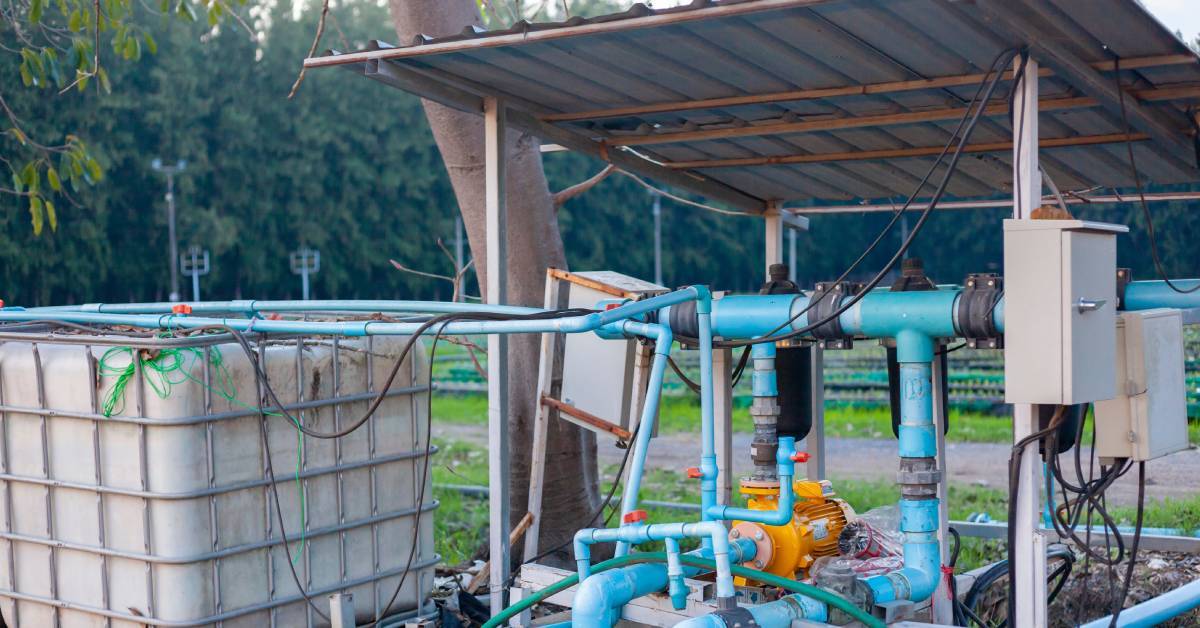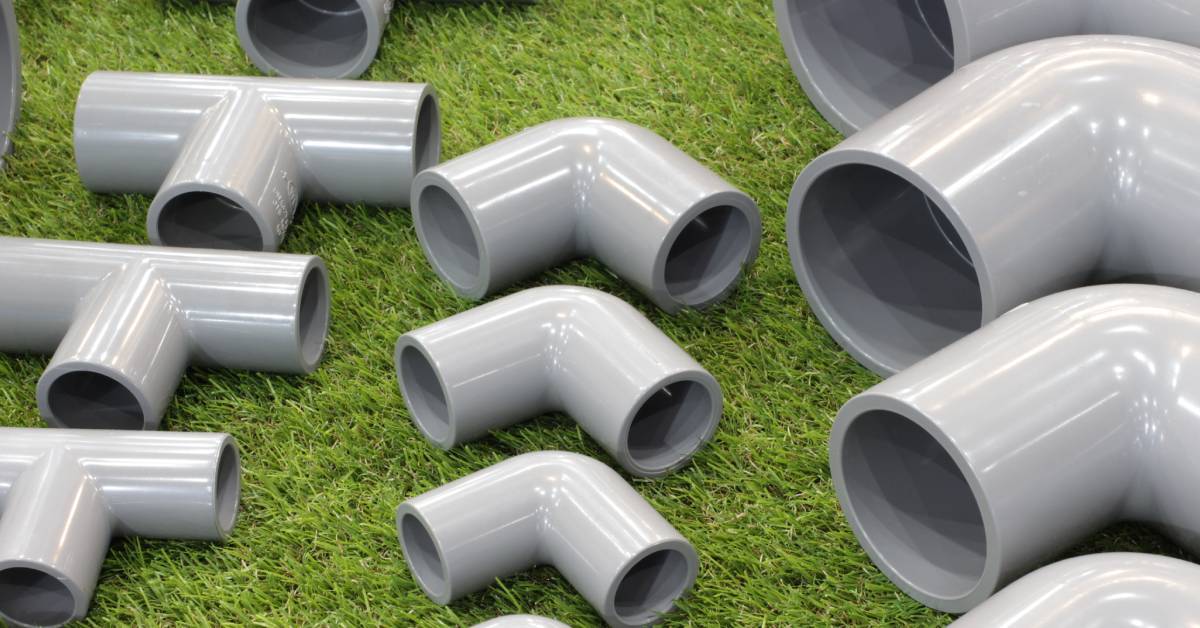17th Feb 2025
A Complete Guide to PVC Pipe Fittings: Everything to Know
Plumbing and construction professionals know that every successful project begins with the right materials, and few modern plumbing systems would be complete without reliable PVC pipe fittings. They play a vital role in connecting, directing, and securing pipes, ensuring the seamless flow of water or other fluids. PVC pipe fittings can make the difference between a system that works flawlessly and one that leaks or falls apart.
This guide dives into everything you need to know about PVC pipe fittings, so plumbers and contractors make informed decisions on each jobsite.
The Importance of PVC Pipe Fittings
PVC (polyvinyl chloride) materials have revolutionized plumbing and construction since their introduction. Serving as an alternative to metal pipes, PVC pipes and fittings quickly gained popularity for their lightweight nature, affordability, and resistance to corrosion. Today, they are a staple in commercial and industrial plumbing systems.
PVC pipe fittings have become integral due to their efficiency in connecting pipes, enabling changes in direction or diameter, and securing liquids or gases under pressure. They simplify complex plumbing layouts, reduce installation time, and improve flexibility in design.
Common Types of PVC Pipe Fittings
PVC pipe fittings come in an impressive variety, each designed to meet specific needs in plumbing and construction. For joining pipes, couplings are the go-to choice, ensuring a snug and leak-free connection. When there's a need to alter the direction of fluid flow, elbows—available in angles such as 45-degree and 90-degree—are indispensable. Tees are frequently used to split or combine the flow in plumbing systems, allowing for multiple branches to connect seamlessly.
Adapters provide the versatility of connecting PVC pipes to pipes made of different materials, while bushings reduce the diameter of a pipe run. Caps and plugs, on the other hand, act as endcaps when you need to seal off an unused section of piping.
Cross fittings can handle more complex plumbing configurations, merging four pipe sections, and unions enable easy disconnection for repairs or replacements. Each type of fitting offers distinct use cases, streamlining installations and making projects less labor-intensive for professionals. Familiarity with these options ensures better planning and execution on every project.

PVC Pipe Sizing and Compatibility
Understanding PVC pipe sizing is vital to ensuring a proper fit between pipes and fittings. PVC piping operates on nominal pipe size (NPS), which measures the diameter of the pipe. It’s important to note that NPS does not necessarily align with the actual physical dimensions of the pipe. For example, a nominal 1-inch PVC pipe has an outer diameter greater than 1 inch.
To match fittings to their pipes accurately, professionals must account for both the diameter and the schedule. Most PVC applications utilize schedule 40 or schedule 80 piping. Schedule 40 is popular for general use, while the thicker-walled schedule 80 is carefully designed for higher pressure systems.
Thankfully, it’s easy to find a wide range of different fittings for your project, no matter which schedule type you need. For instance, you can find schedule 40 bushings at Maxx Supply alongside a wide range of other fittings that will help you construct a resilient plumbing system. Consulting sizing charts and compatibility guidelines is an industry best practice to avoid issues down the line.
Best Practices for Installing PVC Pipe Fittings
Following this complete guide to PVC pipe fittings will help you find the best plumbing solution for any job. However, keep in mind that maximizing the potential of these materials calls for proper handling.
Installing PVC pipe fittings requires precision and proper technique to ensure a durable, leak-free system. First, ensure that all pipes and fittings are cut cleanly and measured accurately to meet the system’s requirements. Next, dry-fit the pieces to verify their alignment before applying any adhesive.
PVC fittings are traditionally joined using solvent cement and primer. Apply primer to the interior of the fitting and the exterior of the pipe, followed by cement, ensuring even coverage. Push the pipe and fitting together firmly, and hold them in place for a few seconds, allowing the bond to set properly. Avoid shifting the connection once joined, as it compromises the seal. Always observe the manufacturer’s recommended curing times before allowing pressure or any type of flow through the system.
Pros and Cons of PVC Fittings
The widespread use of PVC fittings comes as no surprise, given their many advantages. PVC fittings are remarkably lightweight, reducing installation fatigue for workers. They are resistant to rust and corrosion, which ensures long-term durability in a wide range of environments. Considering how lightweight they are, it’s impressive how strong PVC pipes can be, but that doesn’t mean they are impenetrable.
Unless otherwise rated for such performance, they are not suitable for high-temperature applications and can become brittle in extreme cold. Furthermore, exposure to UV rays over long periods may degrade the material’s strength. To mitigate these issues, ensure a proper application and use UV-resistant coatings or insulation if outdoor exposure is unavoidable.

Maintaining and Repairing PVC Fittings
While PVC fittings offer durability, proactive maintenance ensures optimal performance over time. Regularly inspect your systems for signs of leakage, wear, or joint weakness. Keeping the fittings clean by removing debris or buildup can also extend their lifespan.
When leaks or damages occur, small cracks in PVC fittings can often be easily repaired with specialized PVC adhesive, while severely damaged sections may require a full replacement. Always drain the system entirely before conducting repairs to ensure effective bonding. If you anticipate future maintenance requirements, consider incorporating union fittings, which are specifically designed for easy disassembly and repair.
PVC pipe fittings remain a bedrock of modern plumbing and construction, simplifying complex systems with unmatched reliability and affordability. By understanding the types, sizing, installation, and maintenance requirements of PVC fittings, professionals can meet the demands of any project with confidence and efficiency. Don’t leave the success of your next plumbing or construction project to chance. Trust the proven reliability of PVC materials so you can set up plumbing systems that function optimally every day.

